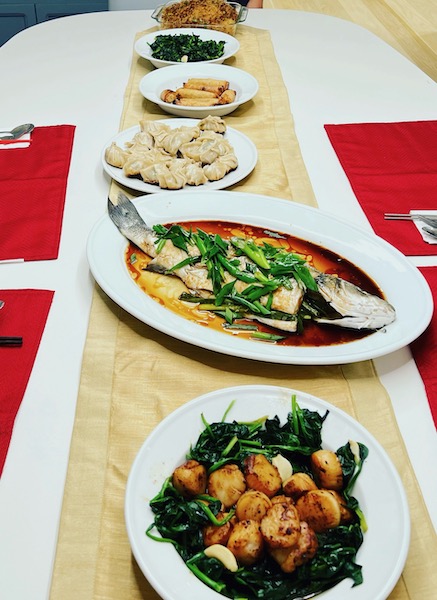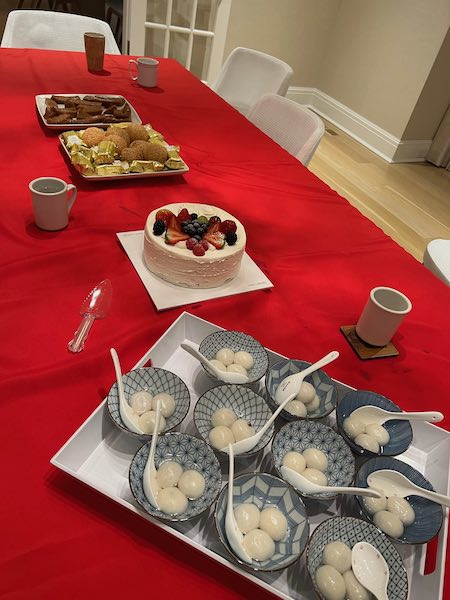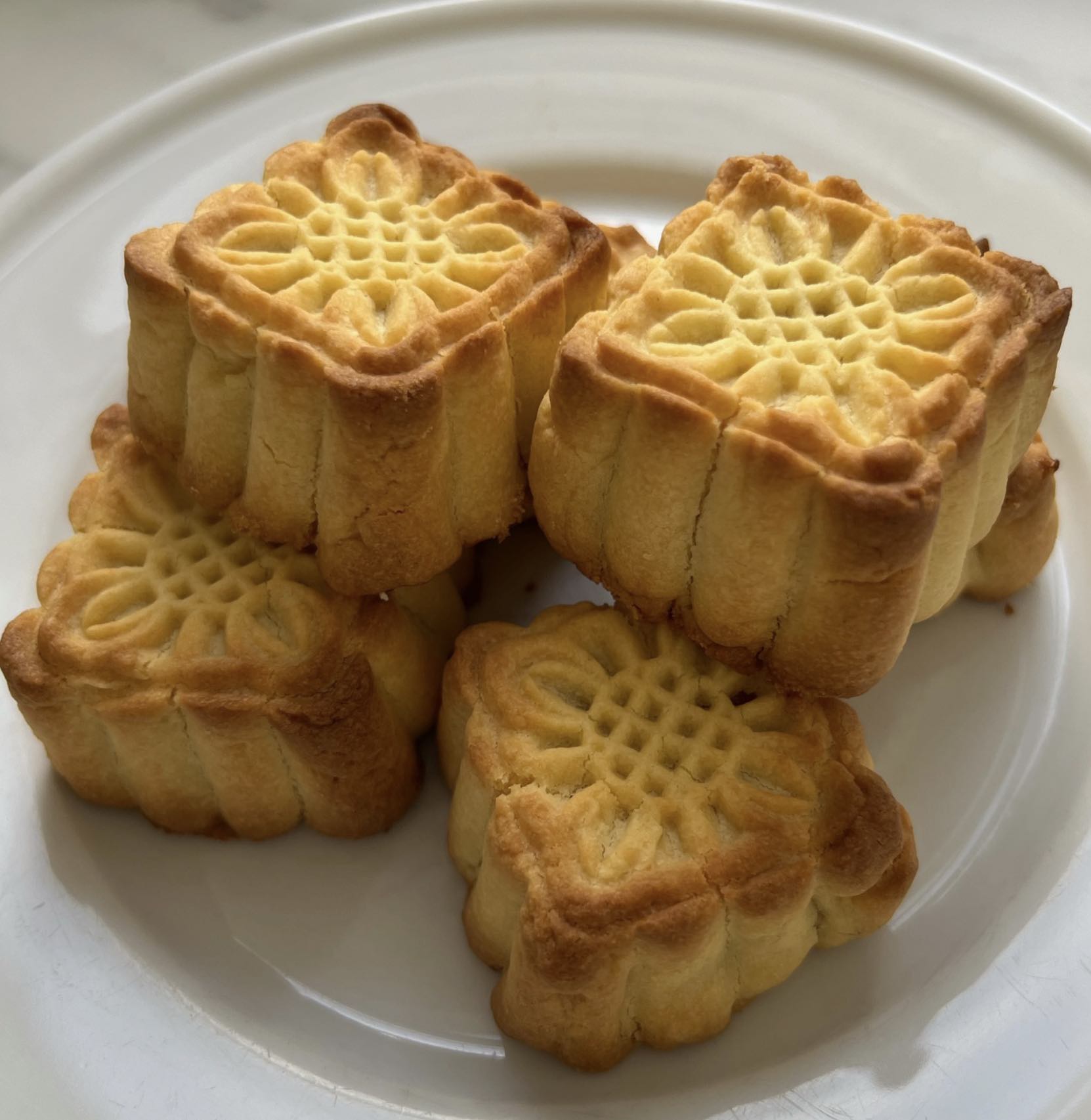Scarsdale Families Celebrate the Lunar New Year
- Thursday, 08 February 2024 14:12
- Last Updated: Thursday, 08 February 2024 14:12
- Published: Thursday, 08 February 2024 14:12
- Wendy MacMillan
- Hits: 934
 A Lunar New Year feastDelicious food, fireworks, and festive decorations…these are only a few of the ways that people around the world celebrate the Lunar New Year. The joyful holiday, celebrated by millions of people from a variety of different cultures, marks the start of a new year based on the lunar calendar. For many Asian cultures, the 2024 Lunar New Year falls on February 10th and will be recognized as the year of the wood dragon. Each year, the Lunar calendar is represented by one of the twelve zodiac animals and this year’s wood dragon is believed to be a symbol of power, prosperity, evolution, and improvement.
A Lunar New Year feastDelicious food, fireworks, and festive decorations…these are only a few of the ways that people around the world celebrate the Lunar New Year. The joyful holiday, celebrated by millions of people from a variety of different cultures, marks the start of a new year based on the lunar calendar. For many Asian cultures, the 2024 Lunar New Year falls on February 10th and will be recognized as the year of the wood dragon. Each year, the Lunar calendar is represented by one of the twelve zodiac animals and this year’s wood dragon is believed to be a symbol of power, prosperity, evolution, and improvement.
The Lunar New Year, one of the most important holidays for many Asian and South Asian cultures, is celebrated for a number of days starting on Lunar New Year’s Eve and culminating 16 days later with the Lantern Festival. From cleaning their houses to get rid of inauspicious spirits, to cooking up lots of traditional dishes, there are many ways families right here in Scarsdale are preparing for, and celebrating this significant time.
Fox Meadow mom and local realtor, To-dao Tran Casey celebrates the holiday with her family by “indulging in a big family dinner, complete with dumplings (a sign of prosperity), and of course longevity noodles. Besides the mandarin oranges (symbolizing good luck and wealth), my kids favorite tradition is the red envelopes containing money, wishing them a safe and peaceful year.” Ms. Casey includes a recipe for her delicious longevity noodles in her monthly newsletter.
Another Fox Meadow mom Serina Lee and her family usually celebrate the new year with extended family on Jan 1, eating traditional foods, bowing to elders and getting money envelopes. Lunar New Year sometimes falls on a school night, so we usually keep it simple and celebrate with a traditional meal including dishes like Dduk Mandoo Guk (rice cake dumpling soup) and Kalbi Jjim (braised short ribs).
Cindy Yau loves all the festivities leading up to this major holiday and says it reminds her of the cheerfulness of Christmas, “It is such a festive time  Tangyuan: a traditional dish for the Lantern Festivalwith many of the traditional markets adorned with red decorations and bustling with people.” Dressed in red to represent cheerfulness and happiness, Ms. Yau usually celebrates Lunar New Year’s Eve with extended family and a big, customary feast. She and her family cook many specific dishes like fish (which symbolizes abundance) and homemade dumplings shaped like golden nuggets. Ms. Yau explained that it is tradition to have leftover food to ensure a surplus for the rest of the year. It is also tradition to let young kids stay up as late as possible in a symbolic gesture of giving their parents a longer life. In addition to staying up past their bedtimes, Ms. Yau said children look forward to receiving red envelopes with money from their elders to wish them good luck in the new year.
Tangyuan: a traditional dish for the Lantern Festivalwith many of the traditional markets adorned with red decorations and bustling with people.” Dressed in red to represent cheerfulness and happiness, Ms. Yau usually celebrates Lunar New Year’s Eve with extended family and a big, customary feast. She and her family cook many specific dishes like fish (which symbolizes abundance) and homemade dumplings shaped like golden nuggets. Ms. Yau explained that it is tradition to have leftover food to ensure a surplus for the rest of the year. It is also tradition to let young kids stay up as late as possible in a symbolic gesture of giving their parents a longer life. In addition to staying up past their bedtimes, Ms. Yau said children look forward to receiving red envelopes with money from their elders to wish them good luck in the new year.
Tina Lin also cooks an abundance of traditional dishes like fish, dumplings, and a buffet of sweet treats to share with family on Lunar New Year’s Eve. As she thoughtfully took the time to explain, “Most traditional foods for Chinese New Year are consumed because they are homophones of something auspicious. Fish (“yu” in Chinese) is pronounced like the word for surplus, so eating fish will lead to a year of abundance. Fish has to be served with its head and tail because you want good luck from beginning to end. Some of the fish is also saved to be eaten on New Year’s Day, so you have “extra” in the new year. Lettuce sounds like “growing fortune,” so I usually make lettuce cups. Oyster is a homophone for “good things.” Sweet and sour dishes are popular for New Year’s because sour sounds like “grandchild”…and the grandparents always want more grandchildren! A black moss that is used in a Buddhist vegetarian dish often eaten during the New Year is a homophone for “wealth.” Other traditional foods are considered good luck because of how they are shaped. Dumplings look like little money bags or ingots of gold. Scallops and clams look like coins. Circular and round foods symbolize harmony. Fried round sesame balls filled with a sweet red bean or lotus root paste are popular. Many new year cakes are steamed in round tins. Turnip cake is a savory cake made of white radish, which sounds like “good luck.” New Year Sweet Rice Cake (“Nian gao”) is a steamed sticky sweet cake made with glutinous rice and brown sugar, and represents progress and growth (sounds like an idiom re: advancing to higher places).”
 Homemade Pineapple CakesMs. Lin’s extended family usually gathers at her house for a delicious feast set atop a table decorated with red and gold place settings. She then hosts her side of the family for the Lantern Festival, which marks the first full moon and the end of the Lunar New Year celebrations. While many Asian and Chinese communities celebrate this holiday by lighting lanterns, performing lion dances, and setting off fireworks, the Lins prefer to focus on their time together as a family and sharing delicious food. For the Lantern Festival, Ms. Lin is always sure to make tangyuan, a customary dish of glutinous white rice filled with a sweet paste and in a sweet syrup. Lin explains that the round shape of the rice balls is symbolic of family harmony. She also treats her loved ones to homemade pineapple cakes and explains that pineapple cakes are a Taiwanese specialty with pineapples symbolizing luck and prosperity.
Homemade Pineapple CakesMs. Lin’s extended family usually gathers at her house for a delicious feast set atop a table decorated with red and gold place settings. She then hosts her side of the family for the Lantern Festival, which marks the first full moon and the end of the Lunar New Year celebrations. While many Asian and Chinese communities celebrate this holiday by lighting lanterns, performing lion dances, and setting off fireworks, the Lins prefer to focus on their time together as a family and sharing delicious food. For the Lantern Festival, Ms. Lin is always sure to make tangyuan, a customary dish of glutinous white rice filled with a sweet paste and in a sweet syrup. Lin explains that the round shape of the rice balls is symbolic of family harmony. She also treats her loved ones to homemade pineapple cakes and explains that pineapple cakes are a Taiwanese specialty with pineapples symbolizing luck and prosperity.
If you and your family would like to partake in a Chinese New Year celebration, join the Scarsdale Chinese Association at their Spring Festival Gala on Sunday February 11th.













